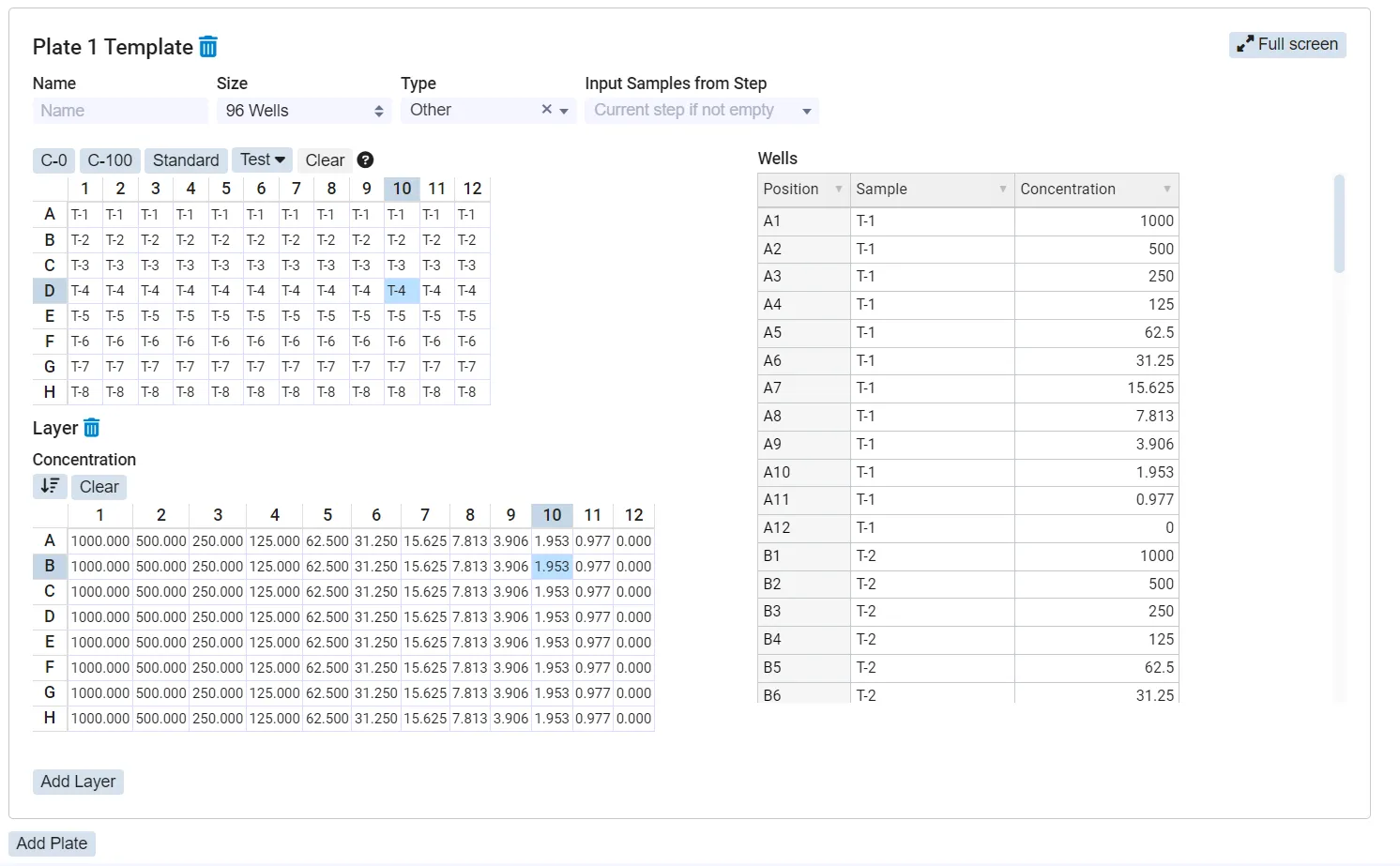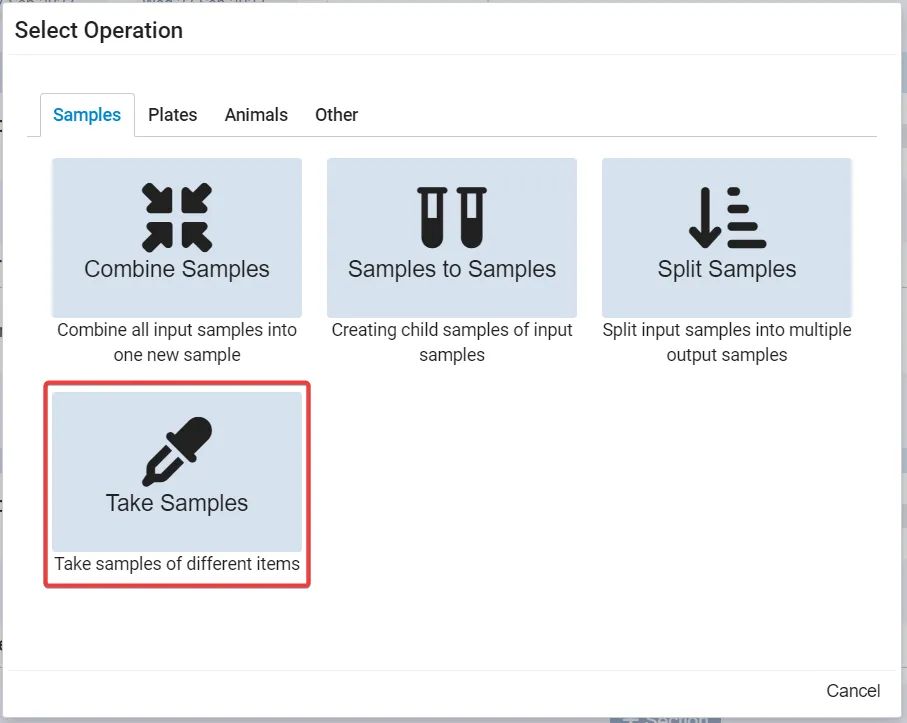Operations
Operations as a concept in Scifeon is really powerful, especially in combination with Procedure Templates. Operations are used to automatically generate data in Scifeon based on a template. This could be putting samples from into plates based on a template, or registering samples in Scifeon based on a template.
By using Operations you ensure that data is generated in a consistent way, which is important for data analysis and reporting. It also saves time, as you do not have to manually enter data in Scifeon.
Operations in the ELN
Section titled “Operations in the ELN”Find all available operation by clicking + Section in a Step and select Add Operation.
Typically operations will work on some input data, and generate some output data. The input data can be e.g. a list of samples, and the output data could be a list of plates with samples in them. For some operations the input can be defined, but the output is always defined by the operation.
The operation itself is defined by a template, which is what is edited when clicking Edit. When the operation is run, the template and the input data is used to generate the output data. The output data is then saved in Scifeon.

In the following you see an example of the Samples to Plates operation template:

In this you see the output generated when some samples are added to the input:

As you see the template and the actual output is of course not the same, but forms the basis of what is generated.
Operation: Take Samples Operation
Section titled “Operation: Take Samples Operation”The Take Samples operation can be used to e.g. take a sample from an animal, or take a child sample from a parent sample. The operation is available in the ELN, and can be used to register samples in Scifeon.
Find it by clicking + Section select Add Operation and then Take Samples:

This adds the Take Samples operation to the step:

First the Subject of the sample must be selected. This can be done by clicking the Subject class dropdown (1). The grid includes templates for generating samples, + Template Row (2) are used to add new templates.
In the grid we have the following columns:
- Subject: This is either a specific Subject, or an automatically selected sample based on a rule. The rules could be: a referenced form-field, or the output of a previous step. In the image above the Subject is Animal, so the column header says Animal.
- Template name: This will will be the name of the generated sample. The default name will be the name of the subject.
- Name Suffix: This will be appended to the generated name.
- Type: The type of the sample.
- Description: Description of the sample.
- Unique Sample Count: The number of unique samples to generate. If this is 1, then only one sample will be generated. If this is 2, then two samples will be generated, and so on.
Naming variables
Section titled “Naming variables”In the Name Suffix and Description columns you can use variables to generate names and descriptions. The variables are:
- ${index}: The index of the sample to generate. This is 0-indexed, so the first sample will have index 0.
- Index start number: The number that the index should start at (3).
- Index padding: The amount of padding zeros to be added before the index(3).
Tutorial
Section titled “Tutorial”In this tutorial you can see how the Take Samples Operation is used to register samples in Scifeon: Recording Batch Records
